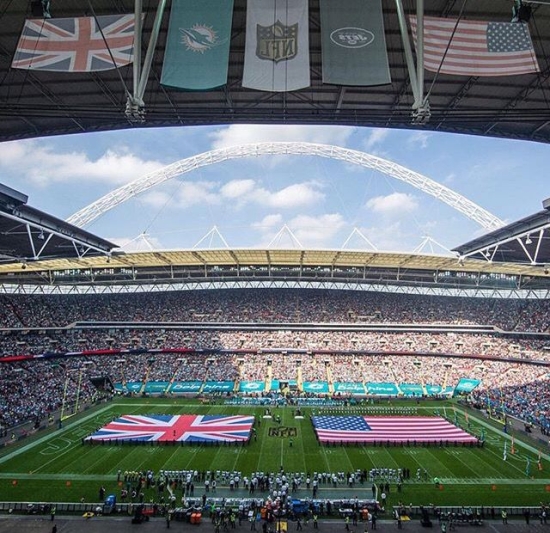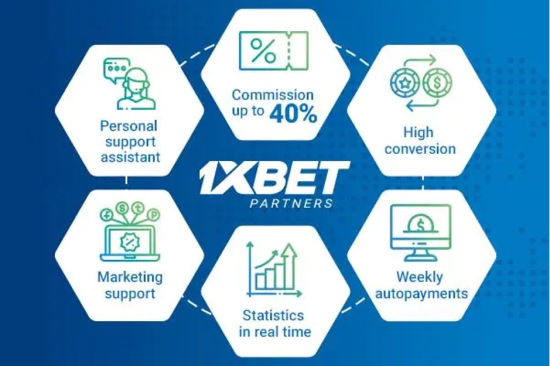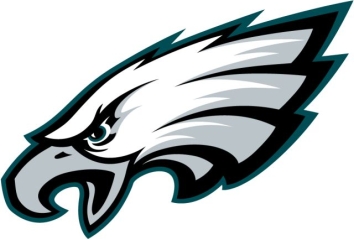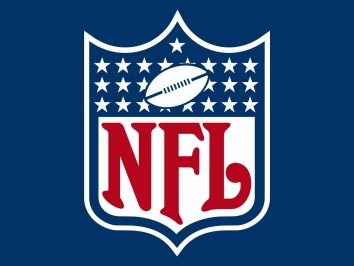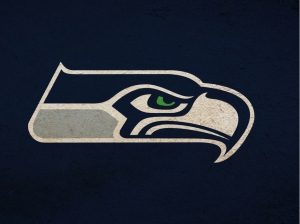The Top Tips for NFL Games Abroad
Okay, before we dive into the ever-growing popularity of NFL outside of its native USA, we have to answer a question for all the non-US readers. Why is it called the National Football League?
Sure, the ball gets a few kicks, but it’s not like actual football in Europe where said ball is exclusively manipulated with the feet -save goalkeeping etc. NFL is far closer to the English game of Rugby, so why not call it US Rugby, or something more appropriate?
Well, both games came to the US from the UK: Rugby was originally known as ‘Rugby football’ but over time the ‘Rugby’ was dropped leaving just the ‘football’. As for Soccer, it was originally known as ‘association football,’ which newspapers nicknamed ‘assoc’, which was shorted to ‘soc’ and finally wound up as ‘soccer.’
Back to the matter in hand, up until October the 2nd 2005 all NFL games were played exclusively in the US. The first game outside of its founding country was in Mexico and it attracted a whopping 103,467 fans: the genie was out of the proverbial bottle.
So, what if you fancy grabbing a slice of the action outside of the US? Well, there are a few things you need to know in advance.
We’ll base this information on the recent games that took place in London, England this October. Following that, we’ll cast our nets a little wider and check out what we know about non-USA NFL in 2024.
London 2024
Wembley and Tottenham Hotspur’s stadium in London became the temporary home to the NFL on 1st, 8th and 15th October 2023. The games featured matches between The Ravens vs Titans, Jaguars vs Bills and Falcons vs Jaguars.
This is the 16th year that a regular season game has been played in London after the New York Giants beat the Miami Dolphins in 2007.
In case you don’t know the results, we’re not going to publish them here. Discover for yourselves and treat it as an incentive to get you into the action for London in 2024.
Speaking of which, we don’t know too much, save the Jaguars playing at Wembley once more and there will be two more games in Tottenham. What we know for sure is that NFL is incredibly popular in the UK, so take heed of the following if you want to experience the thrill of a live game.
Please note that the following advice (with obvious London-centric caveats) applies to every NFL game, anywhere in the world!
- Sign up for all the latest news and get alerts from at least the official NFL and a preferred UK sports site with a dedicated NFL channel. Not only will this keep you up to speed with the game as a whole, you’ll be able to grab tickets as soon as they come out!
- Don’t buy dodgy tickets to save a few bucks. Unless you know for a fact that the tickets are legit, always buy from official sites or partners.
- Check the location of your seats before committing to buy a ticket. Some only offer partial views.
- If you’re disabled, ensure you can get easy access to your seat. Check the facilities and ask the venue for advice on the best way to get around.
- It’s not just about getting tickets. You’ll be wanting somewhere to stay, so your second task is to find suitable accommodation ASAP!
- If you’re not based in London your next job is to book flights (if necessary) and figure out transport links to/from the airport and hotel/stadium. If you’ve not been to the UK capital, the city is enormous, but the transport links are great -so long as you’ve done your homework!
- Speaking of airports, only City Airport is actually in London. All the other London airports are, on average, an hour from the centre.
- Choose the airport closest to where you’re watching the game. Crossing London takes hours and the two stadiums in question are on the opposite side of the capital.
- Either way, be prepared to spend time travelling, so get a portable charger for your smartphone/tablet. Play Bally casino games online, bring a book and always have water and snacks with you.
Munich 2024
After the two games played on Nov 5th and 12th 2023 (Miami Dolphins vs Kansas City Chiefs and Indianapolis Colts vs New England Patriots respectively) the NFL will return in 2024.
But they won’t be at the Frankfurt Stadium, this time they’ll be in Munich. For up-to-date information jump online and check the official statements from the NFL -after reading this, of course!
Brazil or Spain in 2024?
Arguably it’s the latter venue, but that could change. But it’s worth noting that the NFL don’t just have their eyes on Europe, the rest of the world is also hungry for some action too.
Watch this space.
Peculiarities of the 1x partner program for everyone who is active
If you know how to interact with a large audience and have a promoted account on social networks, there is an excellent offer from a top bookmaker. The profitable 1x partner program for everyone offers good conditions for remote work and stable earnings. To join it, you just need to fill out a small form. After its review and approval, you will be able to become a partner of the service and, with proper activity, receive regular income.
The partnership will require you to be creative and invest time, not money. And for this, you will receive a reward in the form of 40% of the profit from each client you bring. To do this, you need to publish information about the bookmaker's work: bonuses, new promotions, special incentives, and betting conditions in general.
The company provides the agent with all the necessary promotional materials, which are constantly updated. Access to them is available in different languages, which allows it to inform its audience about how profitable it is to bet on 1xBet. You need to attach a link in the publications so the bookmaker understands to whom to charge remuneration.
Main reasons to participate in 1xBet partner program
The partnership program has been operating for more than ten years. All the procedures are correctly and clearly organized for the convenience of partners. Register if you are also interested in the partner program for everyone from 1xBet. It is available to adult users. The offer is open-ended, meaning players are guaranteed a stable lifetime commission if they can bring in an active user.
Some of the advantages of the top platform include:
- payout commission on sports betting as well as casinos;
- the opportunity to earn a commission from each of the sections presented;
- the assistance of a marketer who makes recommendations about publishing materials to increase conversions;
- easy withdrawal of money – over a hundred different methods can be used for transactions;
- round-the-clock assistance of the company's employees;
- support of a personal assistant at any time of the day or night.
Brand popularization is not a challenging and quite exciting thing to do. A licensed company allows everyone who is eager to do so to realize their potential. You can advertise 1xBet for an hour or two a day and get your first commission in a week. Register your affiliate account, get a personalized link, materials, and skills, and start promoting a top brand. Earning with this bookmaker is easy and comfortable.
SMS Casino: Your Ticket to Instant Online Gaming
Are you on the hunt for a quick and convenient way to enjoy online casino gaming? Look no further! Our guide to SMS Casino explores a straightforward and user-friendly method for making deposits and diving into your favorite casino games. Learn how SMS technology is reshaping the way players engage with online gambling.
Why Choose SMS Casino?
Opting for an SMS casino offers a host of advantages that streamline your online gaming experience. Here's why SMS casinos have captured the attention of players:
Instant and Effortless Deposits
With a SMS casino, depositing is as simple as sending a text message. No more dealing with complicated payment methods – it's rapid and hassle-free.
Security and Privacy
All you need is your mobile number. No sharing of sensitive financial details, ensuring your privacy and bolstering security.
Responsible Gaming
Many SMS casinos allow you to set deposit limits, promoting responsible gaming and helping you stay within your budget.
Versatility Across Casinos
Numerous online casinos now support SMS deposits, granting you the flexibility to explore various gaming platforms with the same convenient method.
How to Use SMS Casino
Getting started with an SMS casino is a straightforward process:
- Select Your SMS Casino: Begin by choosing an online casino that supports SMS deposits.
- Access or Create Your Casino Account: Log in to your existing casino account or create a new one.
- Visit the Casino's Cashier/Banking Section: Navigate to the casino's cashier or banking section.
- Choose SMS Deposit: Opt for SMS as your preferred payment method for deposits.
- Enter Your Mobile Number and Deposit Amount: Provide your mobile number and specify the deposit amount.
- Confirm the Transaction: Review and confirm your deposit. Your funds will be credited instantly.
Conclusion
An SMS casino offers the ultimate in convenience for online gaming. Whether you're new to online gambling or an experienced player, SMS technology ensures that your transactions are quick and accessible whenever you want.
Don't compromise on your online casino experience. Embrace the simplicity and efficiency of SMS casinos and immerse yourself in a gaming adventure that's free from complications. Join a growing community of players who appreciate the convenience and control that SMS technology provides.
10 NFL Teams Who are a Force to be Reckoned With
This year’s NFL has already begun, and I’ll be honest — it has started with a bang. However, I am sure you know how the results are unfolding, so I won’t bother you with that.
Rather, I will talk about some of the best NFL teams here, so that you know which teams to keep an eye on. You may also look for some free sports betting tips if you are looking for additional suggestions. But, I’m pretty confident about my choices too.
So, let’s begin.
1: Philadelphia Eagles
The Philadelphia Eagles are currently sitting at the top of the NFL standings. However, it can change within a few games or two, if I’m being honest.
Jalen Hurts and A.J. Brown have shown they can drive this offense to levels comparable to last season. However, the team's defense has notably regressed, a significant factor despite the Eagles holding the best NFL record, ranking seventh in point differential (+57).
Facing off against the Chiefs, Bills, and 49ers in the upcoming three weeks will be an ideal measure to gauge whether the Eagles can pursue a Super Bowl bid in January.
In the Previous Power Ranking: No. 2
Who They Will Face Next: Kansas City Chiefs
2: Kansas City Chiefs
The Kansas City Chiefs, despite their impressive standing in the NFL this year, might not be the safest bet for a Super Bowl repeat. Should they fall short, there are clear areas that might shoulder the blame. Chiefs' GM Brett Veach had ample time during the offseason and up to the trade deadline to bolster a struggling receiving corps, a move that didn't materialize.
Meanwhile, head coach Andy Reid's emphasis on the passing game has overshadowed their rushing attempts, ranking quite low in the league at 26th with a 39.1 percent rushing rate.
Finding a balance in their gameplay, coupled with a standout performance from Rashee Rice in the latter part of the season, could pave the way for Patrick Mahomes and the exceptional Chiefs defense to clinch another championship.
In the Previous Power Ranking: No. 3
Who They Will Face Next: Philadelphia Eagles
3: Detroit Lions
As the Detroit Lions' defense falters, Ben Johnson's offense gains momentum.
Jared Goff finds himself with less pressure as David Montgomery and Jahmyr Gibbs amass over 190 rushing yards, taking charge of the scoring.
Aaron Glenn's defensive unit encounters some areas needing improvement post-Week 10. Yet the team's impressive 7-2 record remains the focal point despite the cleanup ahead.
In the Previous Power Ranking: No. 4
Who They Will Face Next: Chicago Bears
4: Baltimore Ravens
The Baltimore Ravens seem to have a knack for hindering their own Super Bowl aspirations. And, week 10 encapsulated the issues that have consistently held them back.
Ronnie Stanley and Marlon Humphrey suffered serious injuries, Lamar Jackson made two costly interceptions, Justin Tucker had a field goal blocked, and the team strangely sidelined Keaton Mitchell in the late stages of the game. If these persistent self-inflicted problems persist on a tight schedule, the Ravens might be looking at consecutive losses.
In the Previous Power Ranking: No. 1
Who They Will Face Next: Cincinnati Bengals
5: San Francisco 49ers
The recent resurgence of the San Francisco 49ers echoes the team's earlier season form.
Chase Young's addition ignited their pass rush, while the return of Deebo Samuel and Trent Williams completed the missing links in their offensive strategy. Health remains a concern, yet the 49ers boast the NFL's most formidable roster.
With an above-average performance from Purdy at quarterback, they're poised to contend for the Lombardi Trophy.
In the Previous Power Ranking: No. 8
Who They Will Face Next: Tampa Bay Buccaneers
6: Cleveland Browns
All the Cleveland Browns need is for Deshaun Watson to play strategically and deliver a handful of spectacular plays every game.
On defense, Myles Garrett and the team have shown they can effectively neutralize top-notch offenses, while Jerome Ford has been doing a commendable job as a replacement starter.
If the Browns continue to see the improved version of Watson from the latter part of the season instead of the earlier performance, they could truly contend for the Super Bowl.
In the Previous Power Ranking: No. 10
Who They Will Face Next: Pittsburgh Steelers
7: Miami Dolphins
The Miami Dolphins are in a quite a decent position leading the AFC East, showing strength compared to Buffalo. And, they're set to welcome back De’Von Achane and expect left tackle Terron Armstead to be in better shape post-bye week.
Additionally, the team's defense is notably improving.
However, Miami's Achilles' heel remains its winless streak of 0-3 against teams with winning records this season, marked by a challenging -49 point differential in those matchups.
In the Previous Power Ranking: No. 7
Who They Will Face Next: Las Vegas Raiders
8: Dallas Cowboys
Once again, the exciting Dallas Cowboys have asserted their dominance, showing a knack for overpowering struggling NFL teams. Their recent win showcased a commanding performance from both offense and defense, highlighting the team's expertise.
Luckily for Dallas, another opportunity awaits next weekend as they face off against Carolina, a chance to display their prowess once more.
In the Previous Power Ranking: No.9
Who They Will Face Next: Carolina Panthers
9: Cincinnati Bengals
While Tyler Boyd faced criticism from fans for his dropped touchdown that had significant implications, the Cincinnati Bengals' downfall in Week 10 was primarily attributed to —
- Two turnovers by Joe Burrow, a struggling offensive line, and
- A defense that yielded 544 total yards, averaging 7.4 yards per play.
Nonetheless, considering their performance leading up to this game, there's reason to believe that the Bengals remain among the top-tier NFL teams in 2023.
In the Previous Power Ranking: No. 4
Who They Will Face Next: Carolina Panthers
10: Jacksonville Jaguars
On a sobering Sunday afternoon, the youthful Jacksonville Jaguars were reminded of their need for growth. Trevor Lawrence faced challenges and errors, eventually being replaced due to pressure. Not really something you’d want to see from a promising player like him.
The team's defense appeared quite sluggish, almost forgetting the bye week was over. Despite this setback, there's hope for a swift recovery as they gear up to face Tennessee in Week 12.
In the Previous Power Ranking: No. 6
Who They Will Face Next: Tennessee Titans
NFL 2023: Who Will Top the Divisions in the NFC?
During the kick-off of the 2023 NFL season, Jared Goff led his underdog Detroit Lions to a shocking victory against none other than the reigning champion Kansas City Chiefs, on the road no less. The Lions haven't exactly been regulars in the playoffs lately, they've only made it there a measly three times since the turn of the millennium.
But against all odds, they pulled off the most epic upset against Patrick Mahomes and his dynasty-status-approaching Chiefs. And they have since built on that earth-shattering victory, improving to a record of 6-2 after nine game weeks. We're smack bang in the middle of the 2023 NFL season so it's time to buckle up and assess the current standings while playing the crystal ball game. Who's going to reign supreme in their divisions two months down the line? Let's find out!
NFC East - Philadelphia Eagles
The NFC East is a supercharged division. Just last season, a whopping three out of the four teams made it to the playoffs, with the Philadelphia Eagles, Dallas Cowboys, and New York Giants wowing everyone. But this year, oh boy, the Giants have capitulated, and their performances? Not so impressive anymore.
The MetLife Stadium team is currently struggling with a measly 2-7 record. To put things in perspective, only the Arizona Cardinals and the Carolina Panthers have fared worse in the entire league. On the other hand, the Eagles and the Cowboys continue to soar, the former currently leads the division with eight wins and just one loss. The latter meanwhile is trailing behind with three fewer wins but having played one less game.
The Cowboys are making strides to reclaim their powerhouse status, but let's be real, they've still got a way to go before catching up to the Eagles. With Jalen Hurts at the helm, the Lincoln Financial Field crew has a QB who can single-handedly snatch victories. The reigning NFC Champions will go toe-to-toe with the Buffalo Bills and the Chiefs - the team that crushed their dreams at Super Bowl LVII in February - before the season is out, however. Despite these challenging games, we fully anticipate them to triumph over the hurdles and reign as champions of the NFC East for the second consecutive season.
NFC West - San Francisco 49ers
The 2023 season started with a bang for the San Francisco 49ers, kicking off the campaign with five straight victories. But as of late, it seems like their luck has taken a nosedive, as have their chances of success. Despite being the favorites for the Lombardi greatness not too long ago, three consecutive losses have prompted Super Bowl odds providers to push them all the way out to +525, only good for third in the pecking order.
But while they have been stumbling, their divisional foe, the Seattle Seahawks, have shown off their skills and announced their return as genuine contenders. They have gone about their business quietly, amassing an impressive record of 6-2 to claim the top spot in the NFC West. However, despite this, deep down, we can't help but believe that the Californians will find a way to reclaim their rightful position.
Brock Purdy, the once dubbed "Mr. Irrelevant," is proving to be quite the sensation as a quarterback, though he hasn't quite hit his stride just yet. And if that wasn't enough, McCaffrey's return to full fitness in just a few short weeks is eagerly anticipated. With these factors in play, it's safe to say that the 49ers possess enough prowess to reign supreme in their division once more.
NFC North - Detroit Lions
As we highlighted earlier, the Detroit Lions pulled off an absolute shocker in this year's opener, taking down the reigning champions on the road. But let's be real, maybe we shouldn't have been so surprised. They showed their party-pooping skills on the final day of last season by beating their arch-nemesis Green Bay Packers at Lambeau Field, crushing the hosts' dreams of making the playoffs.
This season, these guys have put together a whopping 6-2 record and have become a real force to reckon with in the NFC. When it comes to their division, they don't even break a sweat against the Packers or the Chicago Bears. The only thing that can potentially rain on their parade is the Minnesota Vikings. Unfortunately for them, their starting quarterback, Kirk Cousins, took a tumble and that might just be the end of the line for their Super Bowl dreams.
The Lions are sitting pretty with the division in their paws. They've got a sweet schedule ahead, including not one, but two matchups against the lowly Bears. It wouldn't be a surprise if they gave the Eagles a run for their money and snag that top-seed spot in the conference by the end of the year.
NFC South - Atlanta Falcons
If we're talking about tough NFL divisions, it's safe to say that the NFC East takes the cake. But when it comes to the NFC South, well, let's just say it's not exactly top-tier. Out of the four teams in the division - the Atlanta Falcons, New Orleans Saints, Tampa Bay Buccaneers, and Carolina Panthers - only one can boast a winning record. That honor goes to the Louisiana outfit, but that record is still just 5-4 and is hardly eye-opening.
It looks like the second half of the season might get tough for everyone. But if we had to choose a winner, we'd go with the Falcons. They seem to have a slightly better schedule than the Saints.
Ring-Worthy Wins: Navigating the World of Online Casinos in Canada, WWE Style
The high-stakes world of online casinos in Canada is a thrilling arena, akin to the dynamic spectacle of WWE. In this comprehensive guide, we will draw parallels between the strategic planning and excitement of WWE and the world of online gaming.
Our focus is to equip players with the knowledge and tools necessary to navigate this vibrant landscape, ensuring a safe, enjoyable, and potentially lucrative online casino experience. Like a skilled WWE wrestler, a successful online casino player must be informed, strategic, and ready for action.
Understanding the Canadian Online Casino Landscape
Regulatory Framework
Navigating the Canadian online casino scene requires an understanding of the legal and regulatory environment.
This section is akin to learning the rules of the WWE ring—knowing what's allowed and what's not. We will explore the legalities of online gambling in Canada, emphasizing the importance of playing at licensed and regulated sites. This knowledge is crucial for safe and legal online gaming, just as understanding the rules is essential for fair play in WWE.
- Canadian Gambling Laws: Familiarizing oneself with the legal landscape is paramount. Canada's gaming industry operates under stringent regulations, ensuring fair play and security. Each province has autonomy over gambling activities, so it's essential to understand the laws specific to one's location.
- Licensing and Oversight: Trusted online casinos in Canada are licensed by reputable bodies like the Kahnawake Gaming Commission. These licenses guarantee that the casino adheres to strict operational standards, similar to how WWE wrestlers abide by the rules of the ring.
Game Selection Strategies
Choosing the right games in an online casino is as critical as a WWE wrestler selecting their signature moves. This section will delve into the strategies for selecting the most suitable games in Canadian online casinos.
We'll discuss the importance of a diverse game portfolio and the role of top game providers in ensuring a high-quality gaming experience. Just as a wrestler's moves are pivotal to their success in the ring, the right game selection is key to achieving success in the virtual casino arena.
- Diverse Portfolio: The best online casinos boast a diverse game portfolio. From slot machines with themes ranging from classic fruits to WWE superstars, to table games like blackjack and roulette, there's a game for every style and strategy.
- Game Providers: Top-tier casinos partner with renowned game providers like Microgaming and NetEnt. These collaborations ensure high-quality graphics, smooth gameplay, and fair odds, akin to the production quality of a WWE match.
Winning Strategies and Tactics
Understanding Odds and Payouts
In this section, we discuss the importance of understanding odds and payouts in online casinos, drawing parallels to a WWE wrestler studying their opponent.
Knowing the house edge and RTP (Return to Player) of games is vital for informed decision-making, much like a wrestler needs to know their opponent’s strengths and weaknesses. We'll break down these concepts to help players choose games wisely and increase their chances of winning.
- House Edge: Just as a WWE wrestler studies their opponent, players must understand the house edge. Each game has a different edge, and knowing this can significantly influence your game choice and strategy.
- Payout Rates: Look for games with high Return to Player (RTP) percentages. A higher RTP means a better chance of winning in the long run.
Effective Bankroll Management
Effective bankroll management in online casinos is akin to a wrestler planning their strategy for a match.
This section will provide insights into setting realistic gaming budgets and employing wagering strategies that align with your financial limits. Just as a wrestler conserves energy and plans their moves, a smart player manages their bankroll to sustain longer play and maximize enjoyment.
- Setting Limits: Establish a budget for your gaming sessions, akin to a wrestler planning their moves. This prevents overspending and ensures a responsible gaming experience.
- Wagering Strategies: Implement wagering strategies that match your bankroll. For instance, if your budget is limited, opt for games with lower minimum bets.
Maximizing Bonuses and Promotions
Identifying Valuable Offers
In the world of online casino bonuses and promotions are the equivalent of a wrestler's special entrance or signature move—they can be game-changers. This section focuses on how to identify the most valuable offers, from welcome bonuses to loyalty programs. We will guide players on what to look for in these offers, how to compare them, and how to use them to their advantage, much like a wrestler uses their unique skills to gain an edge in the ring.
- Welcome Bonuses: Like a WWE debut, welcome bonuses can give you a significant advantage. Look for offers with generous match percentages and reasonable wagering requirements.
- Loyalty Programs: Regular players should take advantage of loyalty programs. These can offer benefits such as cashback, free spins, and exclusive promotions.
Terms and Conditions
Just as a WWE wrestler must be aware of the match rules, online casino players must understand the terms and conditions of bonuses and promotions. This section emphasizes the importance of reading the fine print, including wagering requirements and game restrictions. Understanding these details is crucial to maximizing bonus benefits and avoiding pitfalls.
Reading the Fine Print: Always read the terms and conditions of any bonus or promotion. Understanding the wagering requirements and game restrictions is crucial to maximize these offers, much like a wrestler needs to know the rules of the match.
Safe and Secure Gaming Experience
Security Measures
Ensuring a safe and secure gaming experience online is as crucial as maintaining safety in a WWE ring.
This section will discuss the vital security measures that reputable online casinos implement, including data encryption and fair play certifications. We will guide players on how to verify these security measures, ensuring a secure and fair gaming environment.
- Data Protection: Ensure the casino employs state-of-the-art encryption technology to protect personal and financial information, just as WWE ensures the safety of its wrestlers and audience.
- Fair Play Assurance: Look for casinos that are audited by independent bodies like eCOGRA. This ensures game fairness and integrity.
Responsible Gaming
Responsible gaming is a cornerstone of a sustainable and enjoyable online casino experience, much like the discipline required in WWE.
In this section, we'll explore tools and strategies to maintain control, such as setting limits and knowing when to seek help. Emphasizing the importance of balance and self-awareness, this section aims to promote a healthy approach to online gaming.
- Setting Limits: Responsible gaming tools allow you to set deposit, loss, and session time limits, promoting a healthy balance between gaming and other life activities.
- Seeking Help: If you feel you're losing control, utilize resources like helplines and self-exclusion programs. Remember, gaming should be entertaining, not a source of stress.
Conclusion
In summary, navigating the world of online casinos in Canada requires a combination of knowledge, strategy, and discipline—qualities akin to those of a WWE wrestler.
From understanding the regulatory landscape and selecting the right games to managing your bankroll and maximizing bonuses, each aspect plays a crucial role in ensuring a safe and enjoyable gaming experience. With this guide, players are well-equipped to step into the virtual casino arena and strive for those ring-worthy wins.
A Beginner’s Guide to Canadian Sportsbooks: What You Need to Know
For those new to the world of sports wagering in Canada, starting your adventure at a sportsbook can be both exhilarating and daunting. A sportsbook is an establishment that accepts wagers on various sporting events. From the icy arenas of hockey to the gridirons of football, these institutions cater to a plethora of athletic competitions.
Legal Landscape: Betting in Canada
Before placing your first wager, it’s imperative to comprehend the legalities of sports wagering in the Great White North. Recently, Canada, more specifically Ontario, has witnessed a transformation in its gambling laws, particularly with the legalization of single-event sports wagering. This legal shift opens a window of opportunity for enthusiasts to engage in this pastime responsibly.
Selecting Your Sportsbook: A Guided Choice
Choosing the right sportsbook is a critical first step. Look for establishments, like FanDuel Canada, that are reputable and offer a secure platform for transactions. It’s advisable to peruse reviews and investigate their licensing to ensure a legitimate and protected betting environment.
Diving into the Odds: The Heart of Sportsbooks
The essence of sports wagering lies in understanding odds, which are the probabilities of an event's outcome. Odds can be displayed in various formats, such as decimal, fractional, or American. Grasping how these odds translate into potential winnings is crucial for a successful foray into sports wagering.
The Art of the Wager: Types of Bets
Wagering is not merely about predicting winners and losers. Various bets offer different levels of risk and reward. Some common types include:
- Moneyline Bets: Choosing a team or player to win outright.
- Point Spread Bets: Wagering on the margin of victory.
- Over/Under Bets: Predicting the total points scored in a game.
- Proposition Bets: Betting on specific occurrences or non-occurrences during an event.
Each type of bet requires a different strategic approach and offers a unique thrill.
Managing Your Bankroll: The Keystone of Wagering Wisdom
Financial prudence is the keystone of wagering wisdom. It’s essential to set a budget and adhere to it. This not only ensures that you gamble within your means but also enhances the enjoyment of the experience. Remember, the goal is to relish the ride, not to derail your finances.
Strategies and Tips: Sharpening Your Edge
While there’s no guaranteed formula for success in sports wagering, certain strategies can sharpen your competitive edge. Educating yourself about the sports you’re betting on, understanding the dynamics of the teams and players, and analyzing statistical data can all contribute to more informed decision-making.
The Social Component: Sportsbooks as a Hub
Sportsbooks often serve as social hubs where fans gather to watch games and share in the collective excitement. This camaraderie can add to the enjoyment, offering a way to connect with fellow enthusiasts and engage in friendly discourse.
Staying Informed: Keeping Abreast of Changes
The sports wagering landscape is ever-evolving. Staying informed about changes in laws, sportsbook offerings, and betting technologies can enhance your experience and keep you ahead of the curve.
Conclusion: The Adventure Awaits
Embarking on your journey through Canadian sportsbooks should be an enjoyable and thrilling pursuit. With the proper knowledge and a strategic approach, you can navigate the world of sports wagering with confidence. Remember, the objective is to have fun, wager responsibly, and perhaps, with a bit of luck and skill, come out on top.
The World’s Most Popular Card Games & Pros
Not all celebrities will attain global fame. Instead, they might become regionally or thematically famous. For example, the name Joey Chestnut might ring a vague bell in the heads of many. But only those who regularly follow eating contests would know that Chestnut is currently ranked Number One in the world of competitive eating.
The same is true for video games. Now that eSports teams and leagues are the subject of global headlines, players like Faker and s1imple are well-known like traditional sports athletes—even if their real names aren’t quite as catchy as their gamer names. But what about the unique subgenre of card games?
Like tabletop games and board games, card games might be smaller compared to eSports crowds—but fans are just as passionate and professionals are just as talented. Let’s dive into the world’s most popular card games and professional players, starting with the oldest: poker.
Poker
If you’ve ever played poker, then it was most likely the most common variation: Texas Hold’em. The World Series of Poker (WSOP) Main Event consists of no-limit Texas Hold’em poker—which is likely how you’ve heard of some of the biggest names in this industry, from Phil Hellmuth to Phil Ivey.
However, it’s important to note that virtual platforms such as PokerStars also feature other variations of the game, including Omaha. And there are plenty of other big-name pros aside from WSOP stars. Beyond live tournaments, many pros create other types of poker content that earn them massive followings. Lex Veldhuis, for example, is a poker pro known for his Twitch channels. Jennifer Shahade, on the other hand, is known for her exploratory podcast on various poker hands.
Magic: The Gathering
Similar to poker, Magic: The Gathering has been around for a while—and it’s hugely benefitted from ‘going digital’ back in 2002 (and then again with a separate release in 2018). Since then, the game has become more accessible for remote players who might not be able to head to a larger tournament or even to compete or collect cards. The latter is especially important, as this collectible card game requires players to slowly build an unbeatable deck.
The player pool is a bit smaller than poker, with between five and six million regular monthly players. But it has a comparatively developed list of celebrities. At the moment Kai Budde and Jon Finkel are considered some of the best players in the world. However, there are plenty of up-and-comers to keep an eye on, including 2023’s Global Champion Jean-Emmanuel Depraz.
Hearthstone
Officially, Magic: The Gathering is listed as a CCG or collectible card game. However, card games like Hearthstone are officially dubbed DCCGs or digital collectible card games. That’s because they were originally released digitally and have always been the subject of virtual competitions. Back in 2014, Hearthstone was released to build on the lore and popularity of the World of Warcraft series.
Since then, it’s become a hugely popular DCCG, regularly hosting competitions on par with WSOP and annual global competitions for Magic: The Gathering Pro Tour. Last year, the Hearthstone World Championship included a prize pool of $500,000, of which sixteen players (pulled from three separate leagues) competed for.
Gwent
Gwent is one of the latest DCCGs to take off—and it’s all thanks to The Witcher 3: Wild Hunt. Developers at CD Projekt Red decided to include a collectible card game to add depth and texture to the open-world RPG. The game ended up being so popular that it was re-released in 2016 as its own stand-alone DCCG game.
Since then, it’s risen quickly to become as popular as other DCCGs like Hearthstone. The GWENT Masters eSports series runs globally and culminates in various live events, similar to online poker. Because it’s such a new game, however, there aren’t quite as many star Gwent players to have stepped into the limelight. Benjamin Pfannstiel and Fred Bird are the world’s top-earning players, having both taken home more than $150,000 in lifetime earnings.
Seahawks Discuss Devastating Loss in Baltimore
In a game that will be remembered for its stark lack of competition, Week 9 saw the Seattle Seahawks suffer a devastating defeat at the hands of the Baltimore Ravens. Finding themselves thoroughly outplayed and outmaneuvered, the Seahawks were handed one of their most crushing losses in recent years, a sobering 37-3 beatdown.
This will impact the Seattle Seahawks odds of making the playoffs and put more pressure on them to perform well in upcoming NFL games.
The game statistics were just as alarming - 515 to 151 yards in Baltimore's favor, with a staggering 298 yards coming from ground runs. The loss was so severe that it entered the records as the fourth-highest rushing yards the Seahawks have ever conceded and the worst since Pete Carroll assumed the head coach role in 2010. This significant setback has prompted an array of reactions and comments from the team, which we will delve into in the following sections.
Pete Carroll - Coach
Pete Carroll, the stalwart head coach of the Seahawks, expressed his disenchantment with the team's performance, stating the unfamiliarity of such a loss. Concerned about the team's inability to deliver as required, Carroll insisted that casting the blame solely on quarterback Geno Smith was unjust. He emphasized that football is a team sport, and the team as a whole failed to "answer the bell" in this crucial game.
Critically, Carroll noted the two turnovers that set the team back. The interception was an unfortunate error on Smith's part, but Carroll didn't attribute it to a communication mishap between Smith and receiver Tyler Lockett. However, it was Smith's fumble, caused by a sack, that was particularly crippling. This fumble came after the Seahawks had just forced a turnover and were primed to score, but instead, the Ravens capitalized on the situation and extended their lead with a field goal.
Addressing the significant struggles of the Run D, Carroll acknowledged that the team's defense had a problematic game, giving up nearly 300 yards on the ground. He highlighted that the problems escalated in the second half, which was more concerning than the first half's performance.
Geno Smith - Quarterback
The Seahawks' quarterback, Geno Smith, did not hold back in his game assessment. He acknowledged the relentless pressure exerted by the Ravens' defense and confessed that he and his team made several mistakes, enabling the opposition to capitalize on these errors.
Smith was candid in expressing his dissatisfaction with the team's performance on third downs and took the blame for his interception, which he characterized as a "bad pass." Despite a struggling running game, Smith took full responsibility for the offense's poor showing.
He pinpointed a critical moment in the game—the Seahawks' inability to convert on the turnover before halftime. Smith was sacked and lost a fumble, a situation from which the Ravens benefited, ultimately extending their lead.
Jarran Reed - Defensive Tackle
The defensive tackle Jarran Reed provided his take on the game's outcome, attributing the loss to a lack of execution from his team. Reed acknowledged the exceptional play of Baltimore's quarterback, Lamar Jackson, but insisted that the Seahawks' defensive woes were largely self-inflicted. His disappointment was palpable as he pointed out that the performance didn't reflect the team's established reputation. Reed emphasized the frustrating nature of the defeat, declaring it unlike any they had experienced throughout the season. However, he also showed resilience, highlighting their readiness to accept the setback, return to the drawing board, and work on their mistakes in preparation for their next game.
Jamal Adams - Strong Safety
Strong safety Jamal Adams had a particularly frank perspective on the game. Adams, known for his outspoken nature, did not mince words while describing the game's outcome. He gave due credit where it was deserved, acknowledging the Baltimore Ravens' superior performance. "They came out, and they hit us in the mouth, simple as that," Adams admitted, encapsulating the domination the Seahawks experienced at the hands of the Ravens. Despite the harsh loss, Adams' comments hint at a valuable learning experience, a chance for the team to reassess their approach and make necessary adjustments for future challenges.
Tyler Lockett - Wide Receiver
Tyler Lockett, the Seahawks' longest-tenured offensive player, was nearly speechless over the game's unexpected turn of events. "It wasn't a good showing at all for us...it was unexpected," he said, encapsulating the shock and disappointment that permeated the Seahawks' locker room. Lockett admitted to a miscommunication on the interception thrown by Smith, accepting his share of the responsibility for the mistake. Despite the setback, Lockett relayed Coach Carroll's message of resilience to the team. Emphasizing the need to refocus, let go of the past game, and prepare for the next week, Carroll's message resonated with Lockett and the rest of the Seahawks as they faced the challenge of moving forward from the crushing defeat.
How the Best Online Casinos in Hungary Use New Technologies
How the Best Online Casinos in Hungary Use New Technologies
Indeed, game publishers are now integrating new technologies into their designs. This explains why some particularly interesting innovations have revolutionised the world of online gaming in recent years in Hungary. Szóval, melyek ezek a technológiai fejlesztések, amelyeket figyelembe kell venni? Milyen oldalakat lehet a legjobb online kaszinók in Magyar? Here are a few hints!
Incorporating Virtual Reality (VR)
The dream of many gamers is to experience their games in the most realistic way possible. This is now possible with virtual reality (VR) technology. With the right VR headset, gamers can immerse themselves in their favourite virtual world. Aware of this potential, many developers in Hungary are now focusing on this sector.
Virtual reality headsets allow gamers to feel as if they are truly immersed in a virtual world. The most popular are:
- PSVR
- Oculus Rift
- HTC Vive.
Artificial Intelligence (AI) and Personalization in the Best Online Casinos in Hungary
The birth of artificial intelligence (AI) is the result of a number of recent technological advances. Various varieties of AI technology exist and their applications are wide-ranging. A lot of casino games use AI based technology. Quite a few casinos embed AI into their games. Gamblers prefer to play against machines rather than against regular players.
Today, AI helps with personalisation, providing users good recommendations and support. Also, thanks to this technology, players in Hungary can get fast customer support, often provided by chatbots.
Blockchain Technology and Security
In recent years, cryptocurrencies, or electronic currencies, have entered the gambling industry. Based on blockchain, a technology reputed to be tamper-proof and unforgeable, they provide the bonus of anonymity appreciated by gamblers from Hungary. The main advantages of cryptocurrency are:
- Anonymity
- Speed
- Reliability
- Transarency
Mobile Gaming and App Development
The system relies on the use of a mobile device to interact with the real world and the gaming universe. In an online casino game, for example, players can play slot machines with their room settings. This allows users to enjoy a unique expereince using their casino bonuses.
Live Dealer Games and Streaming
Games with live dealers are one of the most popular categories of gambling in recent months. Thanks to the introduction of video streaming technology, casino games have been brought to Hungary. Playing games with live dealers has become increasingly popular over the last decade.
Card and table games with live dealers allow players to deal with them actively. Unusual and exciting versions have emerged from combining high payout multipliers and new functionality added to classic games.
Digitalisation in this field will continue and shows no signs of slowing down in the immediate future. It is set to fuel the continued growth of the online casino market. With further development in the digital age, the sector's impact will remain significant.


